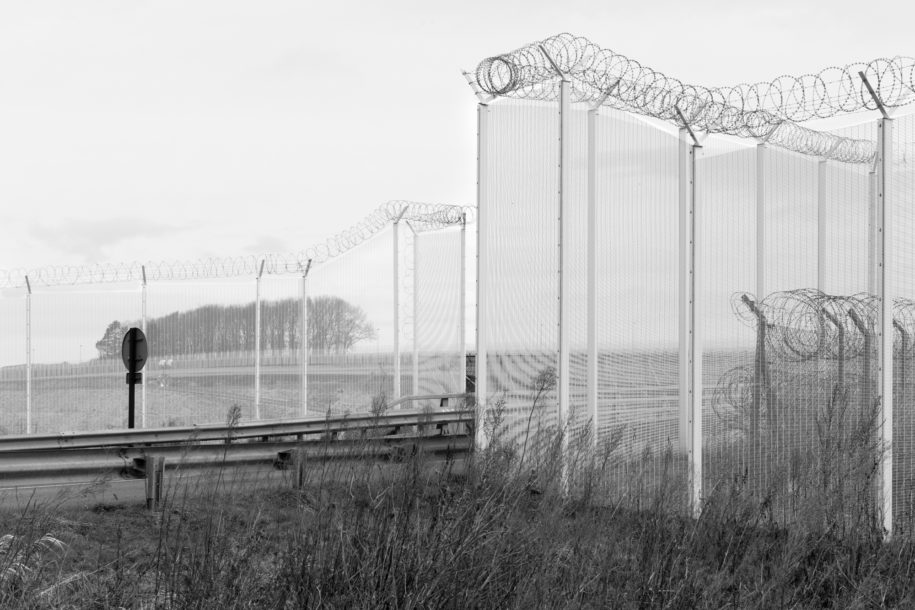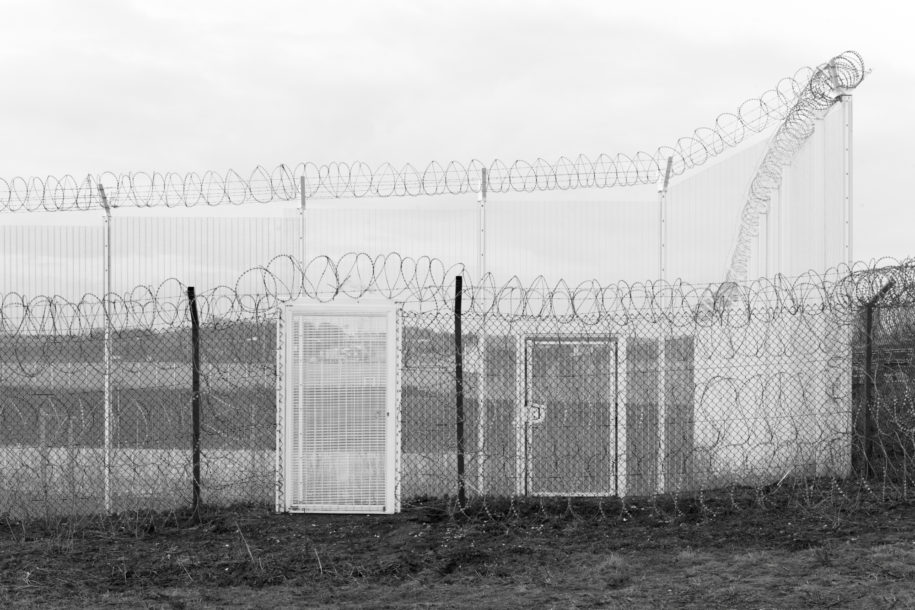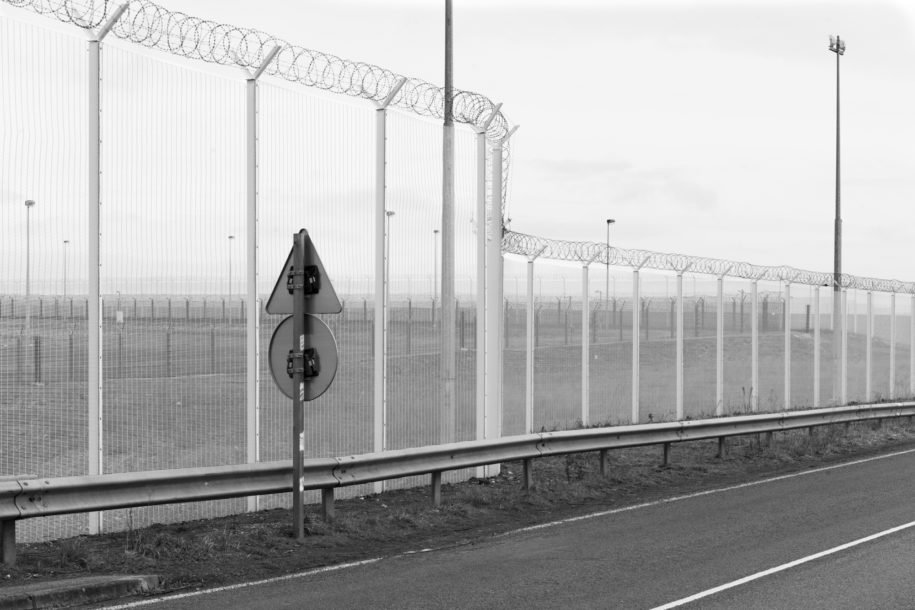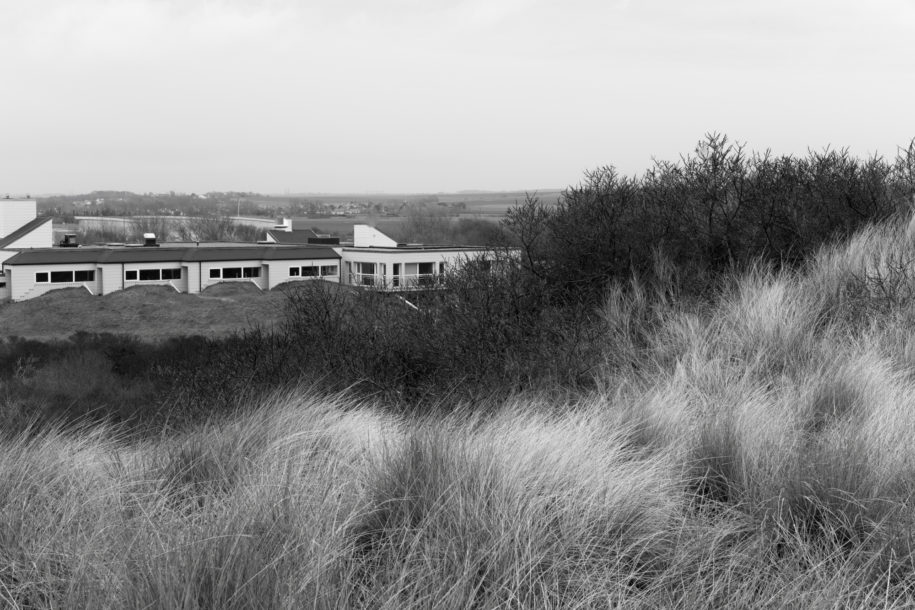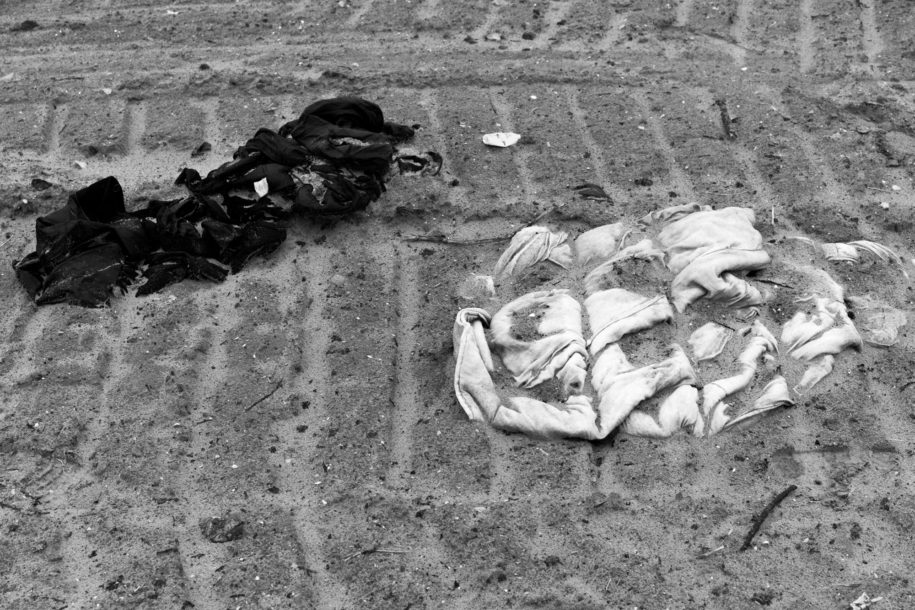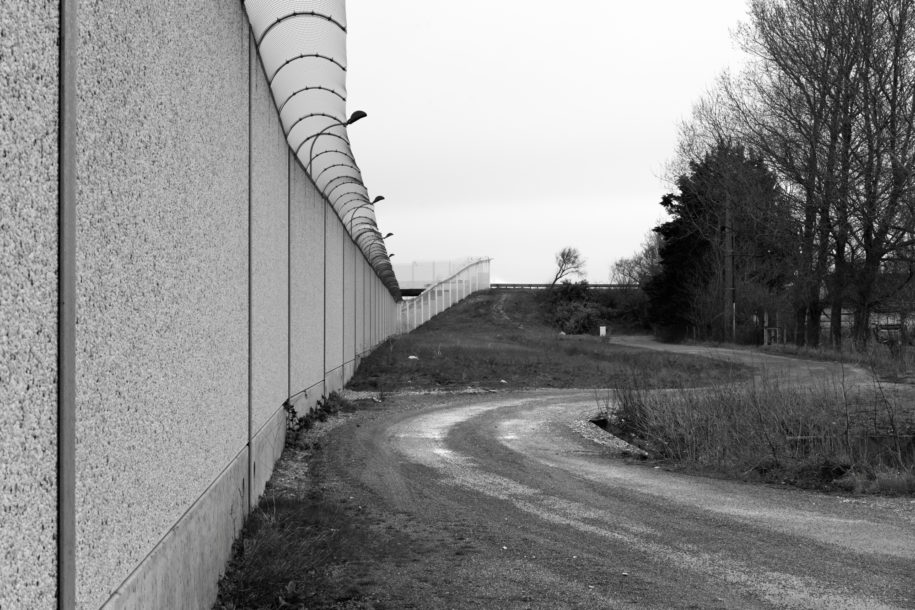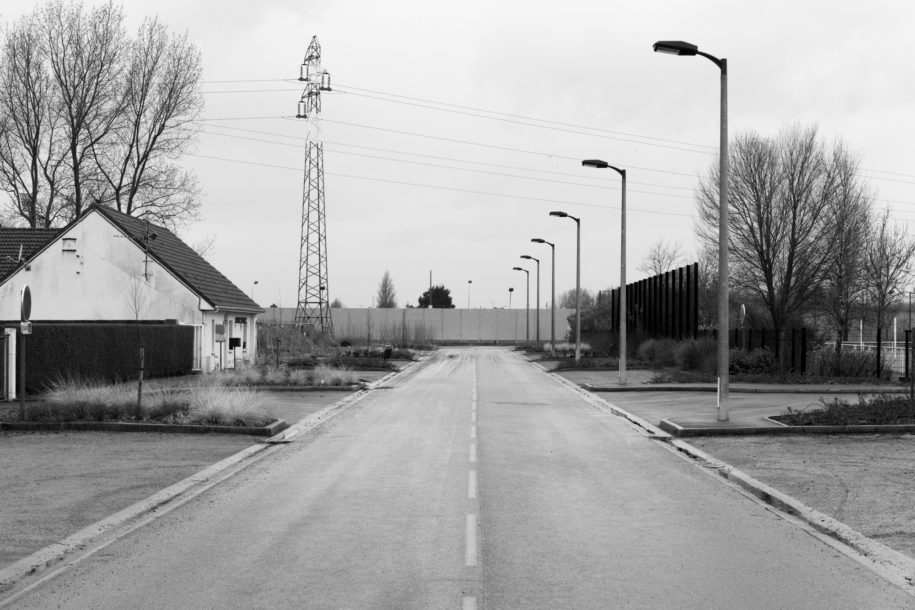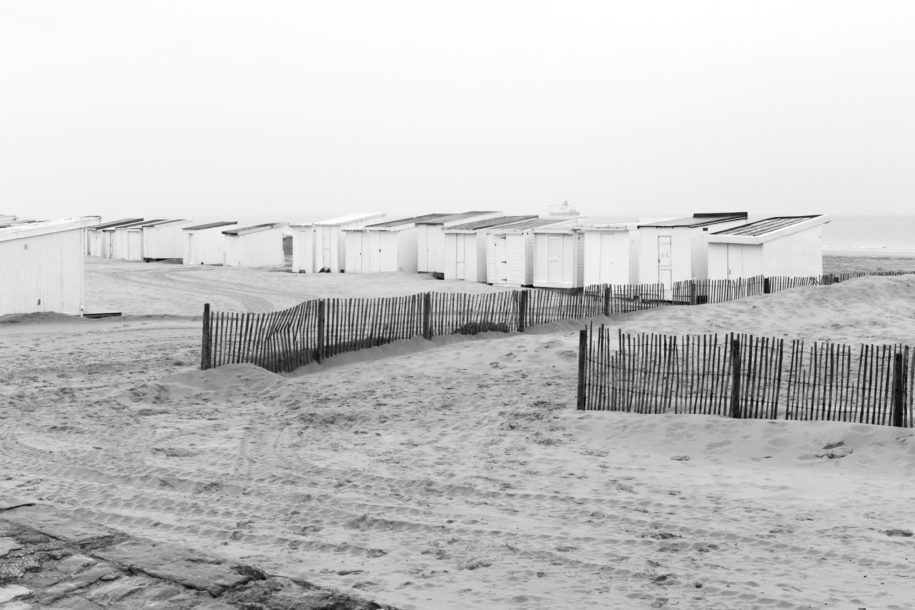-
Departmental road number D243E3, parallel to the "European" highway (A16). Fences topped by barbed wire near the entrance to the Eurotunnel. Such fences were initially built in 2001 after the first influx of refugees in the nearby city of Sangatte, and have been tripled since. Today there is a total of 50km of Fences around the Eurotunnel entrance and the city of Calais.
30/03/18
Baptiste Lignel / Otra Vista
-
Fences topped by barbed wire near the entrance to the Eurotunnel. Such fences were initially built in 2001 after the first influx of refugees in the nearby city of Sangatte, and have been tripled since. Today there is a total of 50km of Fences around the Eurotunnel entrance and the city of Calais.
30/03/18
Baptiste Lignel / Otra Vista
-
Departmental road number D243E3, parallel to the "European" highway (A16). Fences topped by barbed wire near the entrance to the Eurotunnel. Such fences were initially built in 2001 after the first influx of refugees in the nearby city of Sangatte, and have been tripled since. Today there is a total of 50km of Fences around the Eurotunnel entrance and the city of Calais.
30/03/18
Baptiste Lignel / Otra Vista
-
Holiday-Village (VVF, Village-Vacances Français) of Bleriot-Plage. Starting with the 1999 influx of refugees in and around the city of Sangatte, this holiday resort has been used during the winter period by companies of riot police forces (CRS), which has remained the case to this day. The constructions are built behind sand dunes into which Second World War bunkers from the "Atlantic Wall" can be found.
30/03/18
Baptiste Lignel / Otra Vista
-
In October 2016 the "Great Jungle" of Calais was evacuated. About 6 000 people were forcefully removed from the area and dispatched in housing facilities accross France (CAO, Centre d'Accueil et d'Orientation). The entire area was immediately bulldozed in order to prevent both vegetation and people to return. The double layer of fences topped by barded wire is the limit to the National Road RN216, which is the last leg leading to the port area of the city.
30/03/18
Baptiste Lignel / Otra Vista
-
In October 2016 the "Great Jungle" of Calais was evacuated. About 6 000 people were forcefully removed from the area and dispatched in housing facilities accross France (CAO, Centre d'Accueil et d'Orientation). The entire area was immediately bulldozed in order to prevent both vegetation and people to return. Here two blankets and a soap bottle are ground into the soil.
30/03/18
Baptiste Lignel / Otra Vista
-
Built between September and December of 2016 (at the time of the evacuation of the "Great Jungle"), this 1 km long and 4 meters high wall prevents access to National Road RN216. The city has filed a complain to ask for its removal on landscaping grounds, but on March 30th the Administrive Court of Lille ruled against the City, in favor of the conservation of the wall. It is pierced by holes near the ground to allow for wild animals to go across the obstacle.
30/03/18
Baptiste Lignel / Otra Vista
-
Built between September and December of 2016 (at the time of the evacuation of the "Great Jungle"), this 1 km long and 4 meters high wall prevents access to National Road RN216. The city has filed a complain to ask for its removal on landscaping grounds, but on March 30th the Administrive Court of Lille ruled against the City, in favor of the conservation of the wall. It is pierced by holes near the ground to allow for wild animals to go across the obstacle.
30/03/18
Baptiste Lignel / Otra Vista
-
Grande rue du Petit Courgain, leading to the Wall of Calais. Left is the house of the concierge for the sports facility on the other side of the street. Built between September and December of 2016 (at the time of the evacuation of the "Great Jungle"), this 1 km long and 4 meters high wall prevents access to National Road RN216. The city has filed a complain to ask for its removal on landscaping grounds, but on March 30th the Administrive Court of Lille ruled against the City, in favor of the conservation of the wall.
30/03/18
Baptiste Lignel / Otra Vista
-
Central beach of Calais, with the 2:20pm P&O Ferry heading to Dover (30 minutes ride). This Ferry, the Pride of Burgundy, can hold up to 1420 passengers and 530 cars. Any driver caught transporting an illegal immigrant can be fined up to 2 000£. The fair for the ride accross the channel ranges from 68€ to 150€.
30/03/18
Baptiste Lignel / Otra Vista
